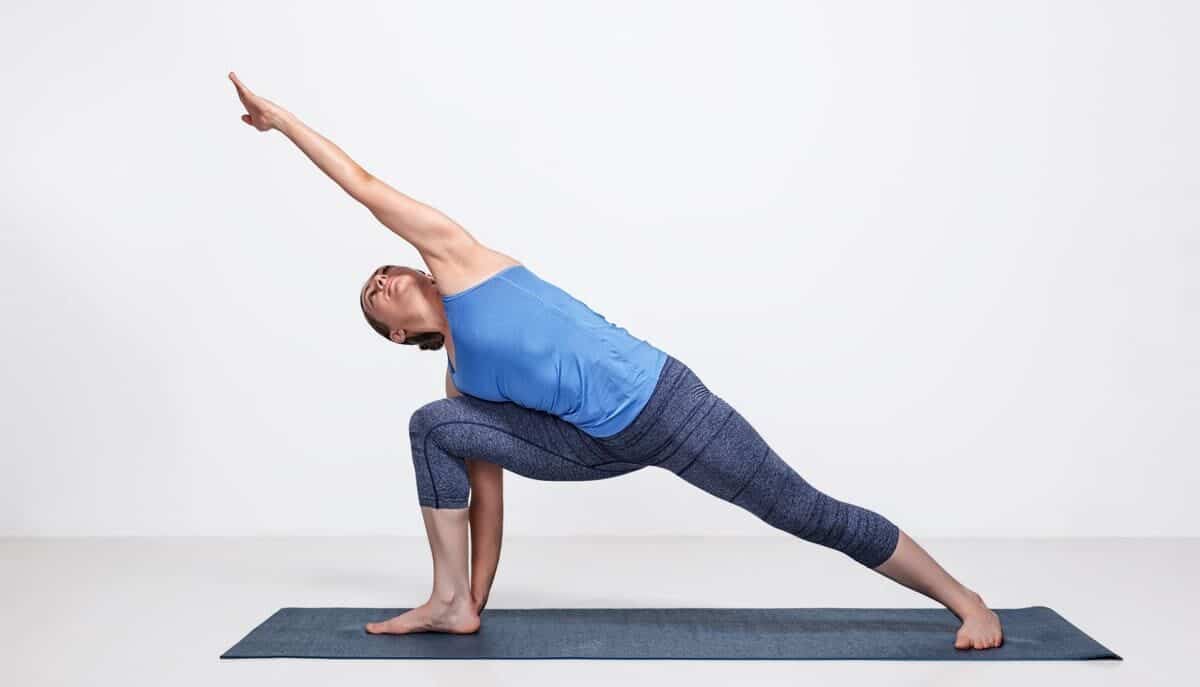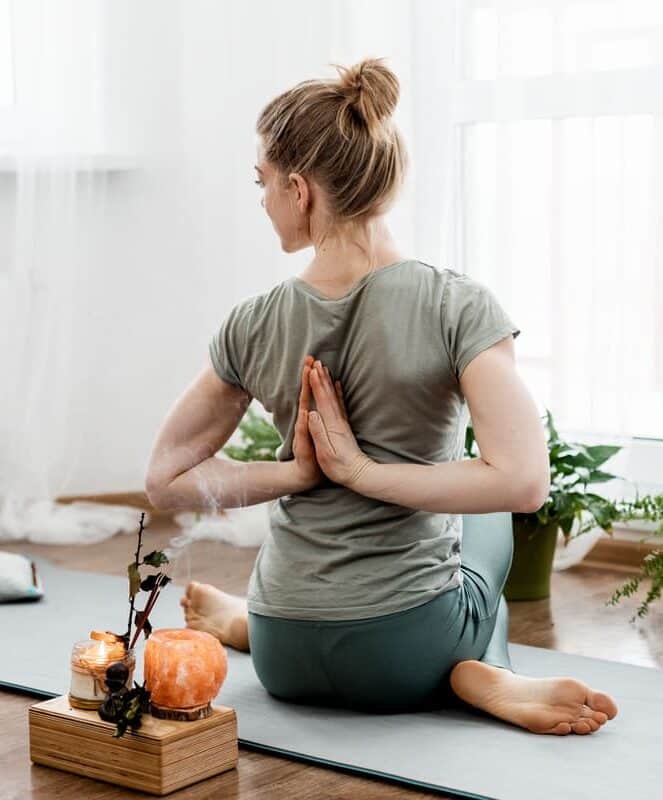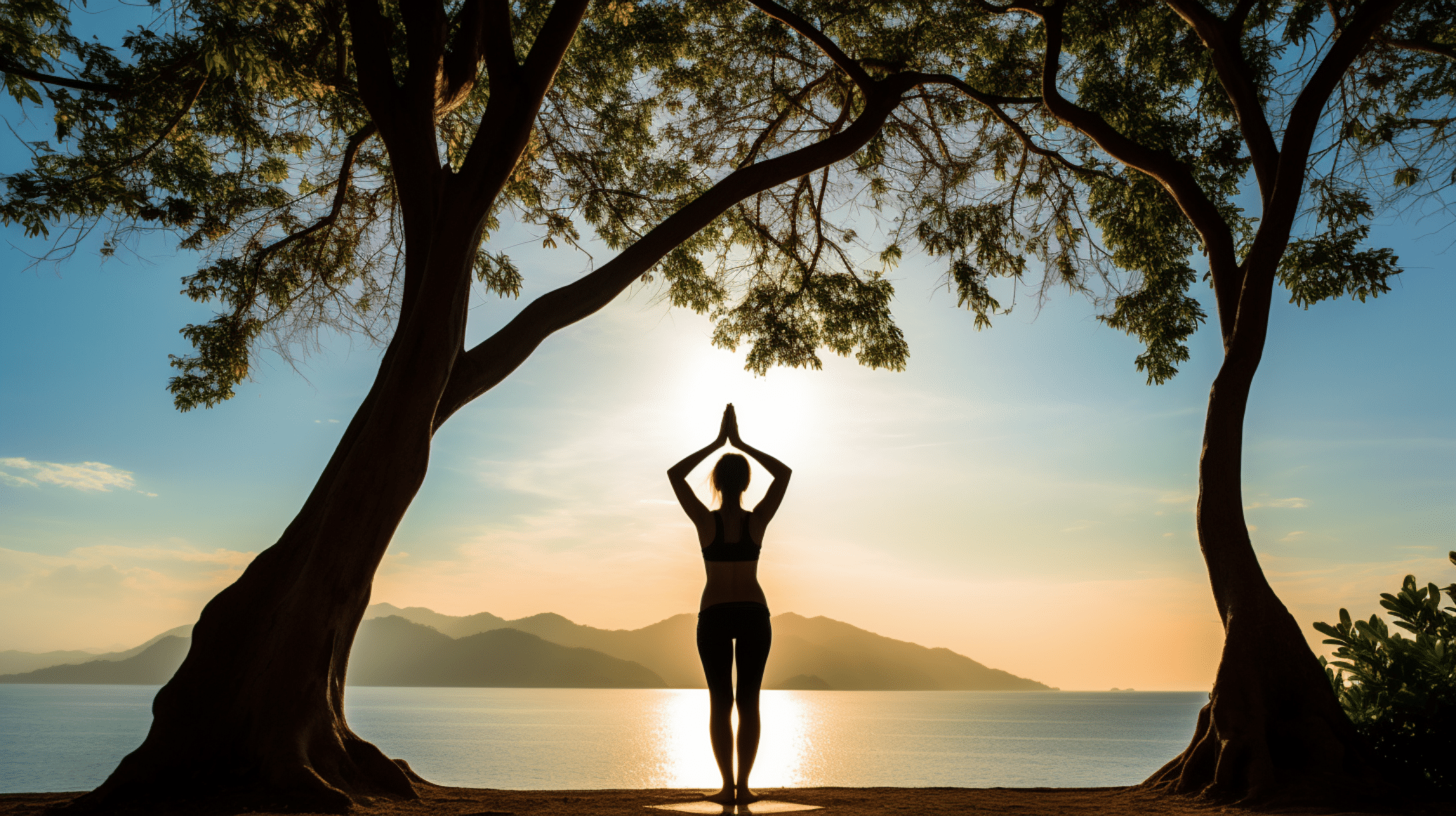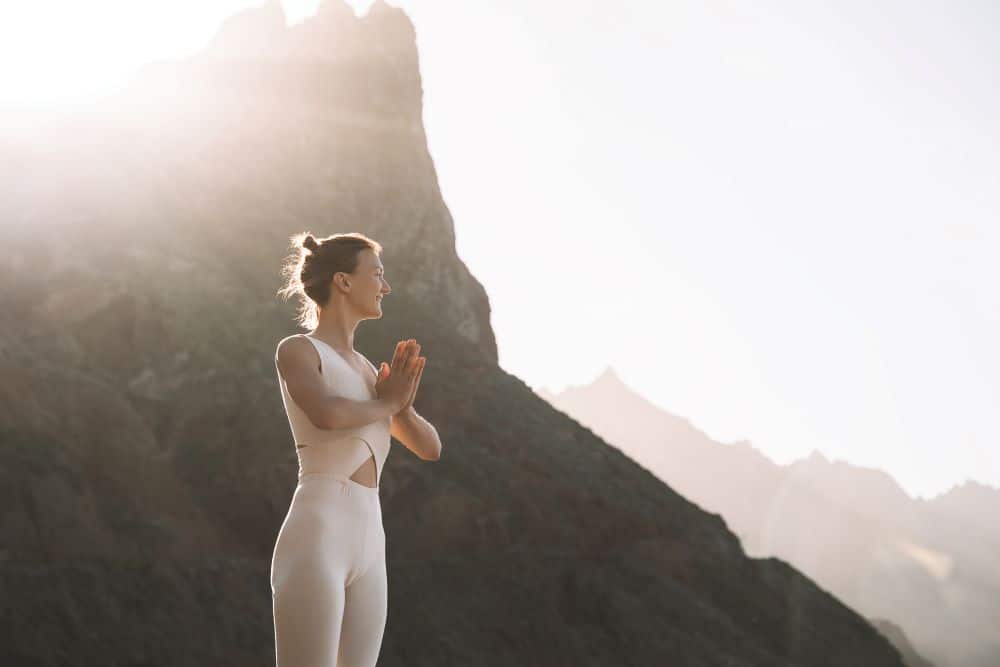- (7)
- (2)
- (4)
- (43)
- (12)
- (4)
- (3)
- (1)
- (50)
- (7)
- (43)
- (16)
- (33)
- (7)
- (1)
- (1)
- (6)
- (3)
- (4)
- (1)
- (7)
- (1)
- (82)
- (4)
- (9)
- (3)
- (3)
- (5)
- (4)
- (18)
- (4)
- (86)
- (8)
When it comes to finding the best Ashtanga Yoga Retreats in Thailand, one should look no further than Chiang Mai, Phuket and Koh Samui. All three of these cities are known for their stunning scenery, tropical climates and highly experienced yoga teachers.
In Chiang Mai, the Ashtanga Yoga Retreats are a must if you want to immerse yourself in the practice of Ashtanga Yoga and experience the beauty of the city. Chiang Mai is home to several highly acclaimed yoga retreats such as the Pureland Retreat, the Joyful Lotus Retreat and the Absolute Sanctuary, all of which offer daily classes in Ashtanga Yoga. These retreats also provide ayurvedic treatments and meditation sessions, as well as various workshops and classes in different disciplines of yoga.
Phuket is another great destination for Ashtanga Yoga Retreats. The city is known for its picturesque beaches, vibrant nightlife and world-class yoga retreats. Some of the most popular retreats in Phuket include The Yoga Barn, the Yoga Sala and the Samahita Retreat. These retreats offer daily classes in Ashtanga Yoga and various therapeutic treatments, as well as a variety of workshops and classes in other disciplines.
Finally, the island of Koh Samui is the perfect place to practice Ashtanga Yoga. Here you will find the Ashtanga Yoga Retreats of Amanpuri, Anamaya and Kamalaya, which offer daily yoga sessions in Ashtanga, meditation and therapeutic treatments. All three retreats also offer various workshops and classes in different disciplines of yoga, as well as activities such as beach volleyball and kayaking.
No matter which one of these cities you choose to visit, you are sure to find the best Ashtanga Yoga Retreats in Thailand. Each of these retreats offers a unique experience and will help you to deepen your practice and connect with your inner self.
Immerse yourself in the transformative power of Yin Yoga with The Yoga Garden Samui's 14-day Yin Yoga 1 Course at Fitkoh Ban Tai. This 100-hour...
Immerse yourself in a transformative journey with our "14 Days, Bikram Yoga Class, in Chalong Muang Phuket" at 5 Elements Hot Yoga Phuket Retreat. This...
Embark on a transformative journey with the "21 Days, Wisdom of the Ancestors Master Training" at 5 Elements Wisdom Retreat. This unique immersion offers an...
Yes, set meals are included in the "5-Day Detox Success Course" at New Leaf Wellness Resort. The detox cleansing program at our resort includes all...
Immerse yourself in the transformative experience of our "3 Days, Detox Weight Loss Package" at New Leaf Wellness Retreat in Thailand. This meticulously designed program...
Immerse yourself in the transformative power of yoga with Om Sunny Yoga Retreat's "7 Days, 200h Yoga Teacher Training" in the serene setting of Koh...
Immerse yourself in the transformative power of the "7 Days, Tantric Yoga Intensive Retreat" offered by Open to Bliss Retreat. Set in the serene landscapes...
Immerse yourself in the transformative power of the 7 Days Tantric Yoga Intensive Retreat, offered by Open to Bliss Retreat, nestled in the serene landscapes...
Immerse yourself in the transformative power of yoga with Pantrix Retreat's 7-Day Yoga Intensive Course in Nong Khai, Thailand. This course is meticulously designed to...
Immerse yourself in the transformative power of yoga with the "30 Days, Advanced Yoga Course" at Pantrix Retreat. This comprehensive program, meticulously designed for serious...
Immerse yourself in the tranquility of Phuket Meditation Center's 5-Day Regular Retreat. This retreat, offered by Phuket Meditation Retreat, is a harmonious blend of authentic...
Embark on a transformative journey with Pyramid Yoga's "15 Days, Ekadasi Psychological Detox Retreat". This retreat invites you to dive deep into your inner world,...
Thailand is a popular destination for Ashtanga yoga holidays, with its stunning beaches, friendly locals, and vibrant culture. The country’s warm climate, tropical atmosphere, and natural beauty provide the perfect atmosphere for a yoga retreat. Ashtanga yoga, which follows the traditional system of yoga set out by the ancient sage Patanjali (from the Yoga Sutras), is a powerful form of yoga that focuses on breath control, daily asana practice (posture), and meditation.
Thailand offers a range of options for Ashtanga yoga holidays, from luxury retreats with spa treatments, to more affordable courses offered in local yoga studios. Many of the courses are taught by experienced and knowledgeable teachers, making them suitable for both beginners and experienced practitioners.
Thailand yoga retreats are among some of the best yoga retreats in the world, offering everything from meditation and chanting, to detox programs and holistic therapies. There are also plenty of opportunities to explore the vibrant culture and stunning countryside of Thailand, with trips to elephant sanctuaries, waterfalls, and traditional villages.
Whether you’re looking for a relaxing yoga break or an intensive yoga training course, Thailand is the perfect destination for an Ashtanga yoga holiday. With its vibrant culture, stunning scenery, and friendly people, the country is sure to provide a memorable and rewarding experience.

• Ashtanga Yoga is a traditional form of yoga developed in India, and is now a popular practice in Thailand.
• It is based on a series of postures that are designed to improve strength, flexibility, and balance.
• The practice is usually accompanied by chanting, pranayama (breathing exercises), and meditation.
• Many ashrams and yoga studios offer classes in Ashtanga, and some also offer retreats and teacher training programs.
• Ashtanga is suitable for all levels of experience and is a great way to relax and de-stress.
• There are many popular spots in Thailand where you can practice Ashtanga, including Chiang Mai, Phuket, and Koh Samui.
Ashtanga yoga is an ancient practice that originated in India thousands of years ago. The system is based on a series of postures and breathing exercises that are designed to improve strength, flexibility, and overall health. The practice follows a set sequence of postures that are linked together with the breath. Ashtanga yoga is a powerful form of yoga that helps to build heat in the body, cleanse the body of toxins, and build physical and mental strength. It is a dynamic practice that emphasizes the connection between breath and movement and is a great way to develop a yoga practice.
Ashtanga yoga consists of a series of postures synchronised with the breath. It is a dynamic, vigorous form of yoga that focuses on strength and flexibility. The postures are divided into six series, with each series building upon the last. Ashtanga is a physically demanding practice that emphasizes the repetition of poses, linking breath with movement.
Ashtanga yoga is a style of yoga that consists of synchronizing the breath with a progressive series of postures—a process producing intense internal heat and a profuse, purifying sweat that detoxifies muscles and organs. The result is improved circulation, a light and strong body, and a calm mind. Ashtanga yoga is traditionally taught as a set series of postures that progress in difficulty, leading up to a peak pose. The series is designed to systematically work every part of the body while calming the mind.
Ashtanga yoga is a dynamic type of yoga practised in a set sequence of postures. It consists of six series of postures, each building on the next. It also includes a breathing technique called Ujjayi and a bandha (energy lock) practice. The practice is done in a heated room and is physically demanding, with an emphasis on synchronizing breath with movement.
Ashtanga yoga is a dynamic form of yoga that combines breathing and movement. To practice Ashtanga yoga, begin with a warm up, followed by the standing postures, then the seated postures, and finish with inversions and relaxation. During each posture, focus on the breath and move from one posture to the next in a smooth, continuous motion. It is important to practice the same sequence of postures each time, and to work at your own pace. Ashtanga yoga is best practiced with the guidance of an experienced teacher.
Ashtanga yoga is an ancient form of yoga that is based on eight limbs of yoga. It is also known as “power yoga” because it is a vigorous and dynamic form of yoga that emphasizes the physical practice of postures.
Ashtanga yoga consists of five core postures: Samasthiti (Mountain Pose), Urdhva Hastasana (Upward Salute), Uttanasana (Standing Forward Bend), Adho Mukha Svanasana (Downward Facing Dog), and Paschimottanasana (Seated Forward Bend). These five postures are combined with various breathing techniques, such as Ujjayi breath and Kapalabhati breath, as well as various bandhas, or body locks, such as Jalandhara Bandha and Mula Bandha.
Ashtanga yoga is a sequence-based practice, meaning that it follows a set order of postures that are designed to open and cleanse the body and mind. This practice is traditionally performed at a very fast pace, usually in the form of a vinyasa or “flow”.
The practice of Ashtanga yoga also includes meditation and chanting. Meditation is used to focus the mind, while chanting is used to bring the practitioner into a deeper state of consciousness. Furthermore, Ashtanga yoga can also include yoga Nidra or “yogic sleep”, which is a practice of complete relaxation.
Seated meditation in Ashtanga Yoga is an important part of the Ashtanga practice. It is usually practised after the physical postures and breath work and is intended to bring a sense of stillness and clarity to the mind and body. The meditation can be done in various ways, such as focusing on the breath or mantras, visualising a healing light, or simply being aware of the present moment. It is important to remember that the goal of meditation is not to control the mind or to achieve a certain outcome, but simply to be still and observe without judgment. The ultimate aim is to cultivate a calm and steady state of mind, allowing for deeper insight into the self and the world around us.
Standing postures are an important part of Ashtanga Yoga as they help to build strength, flexibility and balance in the body. These postures also help to increase energy levels and improve concentration. Standing postures also help to build core strength and develop the body’s agility and coordination. Ashtanga Yoga is a dynamic form of yoga that works the entire body, and the standing poses are a key part of this practice. The standing postures work the muscles of the legs, arms, shoulders and back, as well as the core abdominal muscles. By practising these postures, practitioners are able to improve their overall health and well-being.
Pranayama is an important aspect of Ashtanga Yoga. Pranayama is the practice of controlling the breath with the aim of increasing one’s life force or prana. It is used to purify the body and mind and to create a balance between the body, mind, and spirit. It involves deep, controlled breathing and is used to help regulate physical and mental functions. Pranayama can be used to prepare for meditation or as a stand-alone practice to gain physical and mental benefits. The main types of pranayama practiced in Ashtanga Yoga are ujjayi, bhastrika, nadi shodhana, and kapalbhati.
Bandhas: Bandhas are internal locks that involve contracting certain muscles in the body. These locks allow the practitioner to deepen their practice.
1. Improved Strength and Flexibility: Ashtanga Yoga is designed to build strength, flexibility, and balance in the body. It is an intense style of yoga that works the entire body through a series of postures and sequences.
2. Improved Concentration: Ashtanga Yoga is a meditative practice that helps to train the mind to stay focused and concentrated. This can help you stay focused in other areas of your life, such as work or school.
3. Improved Cardiovascular Health: Ashtanga Yoga can help to improve your cardiovascular health by increasing your heart rate during the practice.
4. Improved Mental Health: Ashtanga Yoga can help to reduce stress and anxiety, as well as improve your overall mental health and wellbeing.
5. Improved Balance: Ashtanga Yoga requires balance and coordination in order to perform the postures and sequences. This can help improve your balance and coordination in other areas of your life.
There are many benefits to practicing Ashtanga yoga, including increased strength and flexibility, improved balance and coordination, improved breathing, increased concentration and focus, improved posture, improved digestion, and an overall sense of wellbeing. Additionally, Ashtanga yoga is an excellent form of exercise that can help to reduce stress and anxiety.
Ashtanga yoga is known for its rigorous practice and focus on building strength and flexibility. It is an excellent practice for developing physical and mental discipline, improving balance and coordination, and improving overall strength and flexibility. Ashtanga yoga can also help to reduce stress and improve focus and concentration.

The purpose of an Ashtanga yoga retreat is to provide practitioners with an opportunity to focus on their yoga practice in a supportive, calming environment. During a retreat, practitioners have the opportunity to deepen their practice, learn new techniques, and connect with other practitioners. The retreat may also include meditation and other activities such as Ayurveda treatments and philosophy discussions. Ultimately, the goal of an Ashtanga yoga retreat is to deepen one’s practice and help practitioners reconnect with their authentic selves.
Attending an Ashtanga yoga retreat in Thailand is an amazing way to deepen your yoga practice, explore a beautiful and unique culture, and relax and recharge in an exotic setting. Thailand is home to some of the most spectacular beaches in the world, lush jungle landscapes, vibrant cities, and tasty cuisine. During a retreat, you will have the opportunity to practice daily Ashtanga yoga with experienced instructors while also having plenty of time to explore the area, take part in cultural activities, or just relax and rest. With its incredible landscapes, rich culture, and world-renowned yoga class instruction, a retreat in Thailand is a perfect way to enjoy a truly unforgettable experience.
Thailand Ashtanga yoga retreats offer an opportunity to deepen your practice and learn from experienced teachers in a peaceful and beautiful environment. During a retreat, you can expect to practice traditional Ashtanga yoga, focusing on the eight limbs of yoga, as well as meditation, pranayama (breath work), and other aspects of the practice. You will also have the opportunity to explore local culture and cuisine, and enjoy the healing benefits of Thai massage. With its stunning beaches, lush tropical forests, and ancient temples, Thailand is the perfect place to enjoy a yoga retreat.
An Ashtanga Yoga Programme typically includes the following components:
1. Asana (postures): Ashtanga Yoga focuses on six specific series of postures that are performed in a specific order.
2. Pranayama (breathwork): Ashtanga Yoga utilizes specific breathwork techniques in order to move energy through the body and to help one enter into a meditative state.
3. Meditation: Ashtanga Yoga encourages the practitioner to connect with their inner self through meditation.
4. Bandhas (energy locks): Bandhas are energetic locks that help direct the flow of energy in the body, and are used in both postures and breathwork.
5. Drishti (gaze): Ashtanga Yoga encourages the practitioner to focus their gaze on a single point in order to help maintain focus and concentration during their practice.
A typical Ashtanga yoga retreat is a great way to immerse yourself in the practice of Ashtanga yoga and deepen your understanding of the traditional style of yoga. During the retreat, you will learn the foundational postures and breathing techniques of the Ashtanga practice and explore the underlying philosophy of yoga.
The retreat will usually include a variety of yoga classes, guided meditation, pranayama, yoga philosophy lectures, and workshops. There may also be a variety of other activities such as hiking, swimming, and sightseeing.
At the end of the retreat, you should be feeling more relaxed, energised, and deeply connected to your practice. You will have gained a better understanding of the principles of Ashtanga yoga and its importance to overall well-being.
Generally, students are also instructed to perform a variety of pranayama techniques consistently, taking their time to better grasp this age-old discipline and enhance their breath control.
Aside from Ashtanga yoga classes, an Ashtanga yoga retreat in Thailand can offer a variety of activities, depending on the retreat. Many retreats offer additional yoga classes such as Vinyasa or Yin Yoga, workshops on meditation and philosophy, as well as excursions to local cultural and natural attractions. Other activities can include massage and spa treatments, beach days, cooking classes, and visits to local markets.
An Ashtanga yoga retreat in Thailand is a unique experience because of its combination of ancient practices, such as Ashtanga yoga, with modern amenities. Participants can enjoy the tranquillity of traditional yoga while still being able to take advantage of the stunning natural beauty that Thailand has to offer. Additionally, due to its close proximity to India, an Ashtanga yoga retreat in Thailand allows participants to learn from experienced and knowledgeable yoga teachers. Finally, the retreat can provide an opportunity to explore the culture, cuisine and spirituality of Thailand.
Yes, depending on the retreat. Some Ashtanga yoga retreats in Thailand offer classes for all levels, including beginners. It’s important to contact the retreat and make sure that the classes are suitable for your level of experience.
Thailand is a great place to take an Ashtanga Yoga teacher training course because of its warm climate, beautiful beaches, and exotic culture. The country is home to some of the world’s most respected yoga teachers, and the courses offered here are comprehensive and often include practice-teaching sessions and hands-on experience. In addition, Thailand is a relatively affordable destination, so you won’t have to break the bank to take an Ashtanga yoga teacher training course here.
The cost of an Ashtanga yoga retreat holiday in Thailand will vary depending on the duration of time and the specific activities included. Generally speaking, a week-long retreat can range from around £600 to £2,000 per person. This will typically include accommodations, meals, yoga classes, and activities.
Yes, it is generally safe to travel solo to attend an Ashtanga yoga retreat in Thailand. However, it is important to do your research and make sure that the retreat you are attending is legitimate and safe. Be sure to read reviews and check out the retreat’s website to make sure that it is reputable. Additionally, it is important to be aware of your surroundings and take necessary precautions to ensure your safety.
1. Consider the location. You want to make sure the retreat is located in a safe and peaceful environment so that you can get the most out of your practice. Research the area to make sure there are no major tourist attractions or other disturbances that might disrupt your experience.
2. Look at the accommodation options. It’s important to make sure the retreat has accommodations that meet your needs. Consider the level of comfort you’re looking for, and make sure the retreat offers a variety of options that suit your budget.
3. Examine the schedule. You want to make sure the retreat offers the type of Ashtanga yoga practice that you’re looking for. Ask the retreat staff what type of practice they offer and if they can accommodate any special requests you might have.
4. Ask about the teachers. Make sure the retreat has experienced, qualified teachers that specialise in Ashtanga yoga. Look into the teachers’ backgrounds and ask for references if necessary.
5. Consider the amenities. Make sure the retreat offers all of the amenities you need for a successful yoga retreat. Consider the type of food offered, the availability of massage and spa treatments, and any other activities that might be available.
Ashtanga yoga is a style of yoga developed by K. Pattabhi Jois. It is a dynamic and vigorous practice that incorporates a precise sequence of postures linked together by breath and movement. It is a physically demanding practice that involves synchronising breath with a progressive series of postures to build strength and flexibility while calming the mind.
1. Ujjayi Pranayama: Ujjayi pranayama is a breathing technique used in the practice of Ashtanga Yoga. It involves using a steady, controlled breath to move energy throughout the body.
2. Vinyasa: This is the linking of breath and movement that is the foundation of Ashtanga yoga. It is important to coordinate the breath with each movement to keep the body and mind connected. 3. Uddiyana Bandha: This is a core strengthening technique used in Ashtanga yoga. It involves drawing the abdominal area in and up, creating a vacuum-like effect. 4. Drishti: The drishti is the point of focus for the eyes during the practice. This helps to keep the mind cantered on the breath and movement. 5. Tristhana: This is a combination of three elements: asana (posture), pranayama (breath), and drishti (point of focus). When all three elements are practiced together, it helps to keep the body and mind in balance. 6. Tapas: This is the practice of self-discipline and dedication to the practice. It is important to stay consistent and committed to maintain the benefits of the practice.Ashtanga yoga is a physically demanding form of yoga that focuses on sequential postures, deep breathing, and meditation. It is a vigorous, athletic style of yoga that builds strength and flexibility. Kundalini yoga emphasises the awakening of the kundalini energy, a spiritual energy said to reside at the base of the spine, using breath work, postures, and mantras. Kundalini yoga is more spiritual in nature and is focused on achieving a union with the divine.
The recommended frequency for practicing Ashtanga Yoga is three to six times a week. As with any physical activity, it is important to listen to your body and adjust your practice accordingly. It is also important to take rest days between practice sessions to give your body time to recover.
1. Location: Choose a retreat location that fits your needs and goals. Consider the type of environment you want to practice in, such as a remote beach or a city centre.
2. Accommodation: Choose a resort or retreat centre that offers comfortable lodging and amenities that meet your needs. 3. Teacher: Research the retreat’s teacher and make sure they are certified and experienced in teaching Ashtanga yoga. 4. Schedule: Check the retreat’s schedule to make sure it fits with your schedule and availability. 5. Cost: Consider the cost of the retreat and make sure it fits within your budget. 6. Reviews: Read reviews from past participants to get an idea of what to expect.
Find the ideal yoga retreat for you. These retreats are located in a variety of settings around Thailand, from peaceful beach getaways to meditative retreats in lush jungles, you will surely find the best yoga retreat for you and have a restful and revitalising experience.




Sign up to our newsletter today to get the latest news and articles straight to your inbox from Thailand Retreats